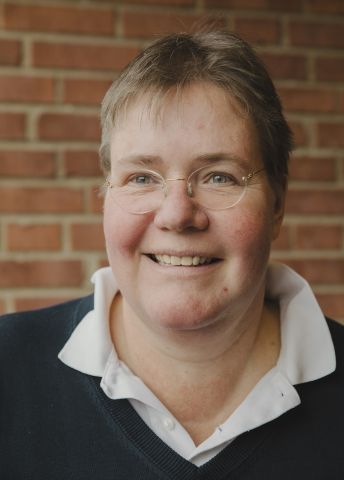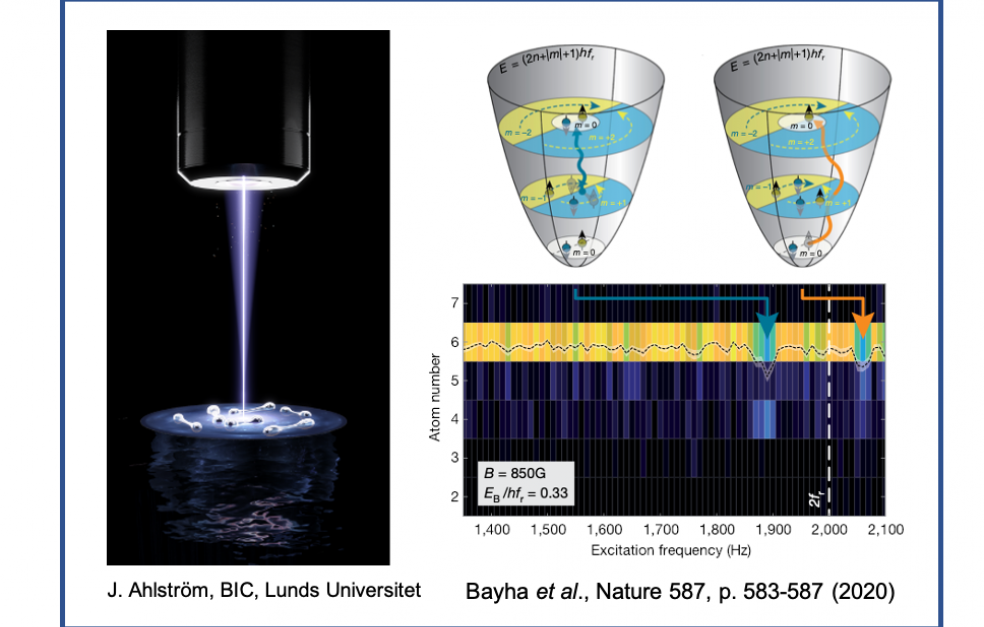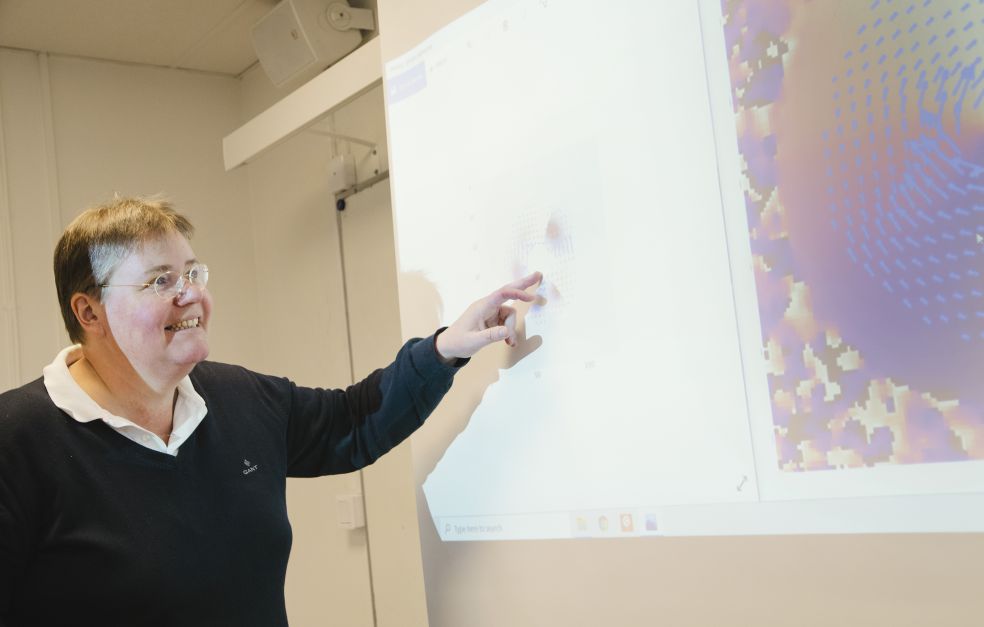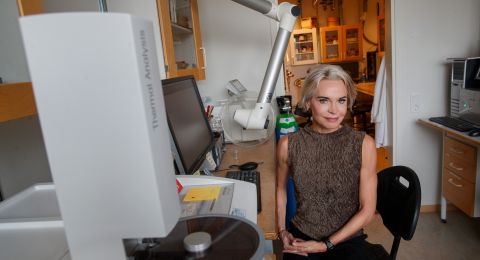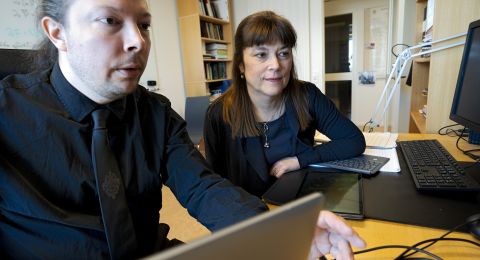Quantum physical “droplets” can be created by cooling down atoms to extremely low temperatures. This completely new type of matter is now being explored by Wallenberg Scholar Stephanie Reimann, who sees a fantastic chance to test current quantum theories in practice.
Stephanie Reimann
Professor of Mathematical Physics
Wallenberg Scholar
Institution:
Lund University
Research field:
Bose-Einstein condensates, nanostructured quantum systems, many-body physics
When certain kinds of atoms are cooled down to very low temperatures they form something called a Bose-Einstein condensate. This is a state where the atoms’ internal energy is so low that properties arise that would never occur at higher temperatures. Reimann, who is a professor at Lund University, researching at the Division of Mathematical Physics and NanoLund, is now exploring a newly discovered phenomenon in the condensate: spontaneously formed “droplets” with ultralow density. They constitute a kind of “quantum fluid” originally predicted in quantum theory, and now experimentally observed by several research teams.
“This matter possesses quite different traits than those we are used to in the world of classical physics.”
The ultracold quantum droplets only occur in very specific circumstances. Reimann quotes an explanation of the phenomenon on what is known as mean field theory. This is a way of studying complicated systems made up of many particles where the so-called mean field averages over the interaction of one particle with all the other particles in the system. In their droplet experiments, experimental researchers have managed to balance all known forces involved so they cancel each other out, and the mean field almost disappears. It is then possible to discern a very weak force, a purely quantum phenomenon, that causes the droplets to form.
“This means that one has found a way to remove most the interactions between particles so that an effect that normally is infinitesimally small can actually be studied for the first time,” Reimann says.
“The most important benefit gained from becoming a Wallenberg Scholar is that it gives me the freedom to delve into the depths of my field for a long time – to become absorbed by it, without the distraction of seeking funding or delivering a specific result. Or put simply: it enables me to practice science.”
Verifying the simplifications
In ultralow-density droplets the atoms are so far away from each other that each droplet has a lower density than air. One remarkable property of the droplets is that if they are disturbed by an input of energy, e.g. by being shaken, they do not heat up. Instead, they get rid of surplus energy by releasing individual atoms, thereby maintaining their ultralow temperature. This phenomenon may turn out to be of practical use in applications such as cooling and superfluidity, for instance. But right now potential practical applications are not what interest Reimann most; it is the potential for a deeper physical understanding of quantum matter.
Although we now have computers with enormous capacity, it is extremely difficult to compute systems involving many atoms. Simplifications and approximations are needed for the calculations even to be possible. Much of quantum theory is based on calculations of this kind. But no one can be absolutely sure how well the simplifications represent reality until we succeed in creating a practical experiment to test them. The ultracold quantum droplets are one such experiment.
“So this gives us the opportunity to check the accuracy of our formulas. It’s incredibly exciting – like a new playground where we can try out and refine our theories and methods.”
Reimann’s research team has been collaborating with German colleagues on ultra-cold atomic fermi gases, and they recently had an article published in Nature. There they show how systems comprising just a few atoms build up quantum systems made up of numerous atoms in a manner resembling the well-known Higgs mechanism in particle physics.
As a Wallenberg Scholar, Reimann will also be exploring a field called dipolar quantum gases. These are gases of atoms placed in a special state by being captured using magneto-optical trapping techniques. Experimental groups have recently shown that a supersolid state can then arise, in which the substance simultaneously exhibits superfluidity while having an ordered, periodic structure resembling a crystal.
A beautiful theory, and a world full of surprises
Research was not always Reimann’s dream. For a long time she wanted to be a cellist.
“But you have to spend so much time practicing …it would have been all too demanding,” she says, laughing.
She has never given up the cello, and was due to play in a concert a few days after the interview. But she has no regrets about devoting her energies to research.
“Quantum physics is a wonderful field. It’s such a beautiful theory. Even though we’ve been developing it for a hundred years, it’s still full of surprises. It’s a whole world of phenomena completely different from all the physics we see around us.”
She received her PhD in Regensburg, Germany, and then spent two periods as a postdoc, first in Copenhagen, then in the Finnish city of Jyväskylä. In 2000 she joined Lund University, and says she was fortunate to secure funding for her research.
“It’s usually a problem, here and in other countries. There is an element of uncertainty when a portion of one’s salary comes from external funding sources. Life as a researcher becomes a scramble for funding. That’s why we need research donors like Knut and Alice Wallenberg Foundation, which allows for freedom and the time to think deeply. With proper research funding, this is a great place for a physicist. The Division of Mathematical Physics at the Physics Department has expanded very recently, adding some excellent people and creating a really good team spirit. And Lund is a wonderful university city to live in.”
Text Lisa Kirsebom
Translation Maxwell Arding
Photo Åsa Wallin, Stephanie Reimann
